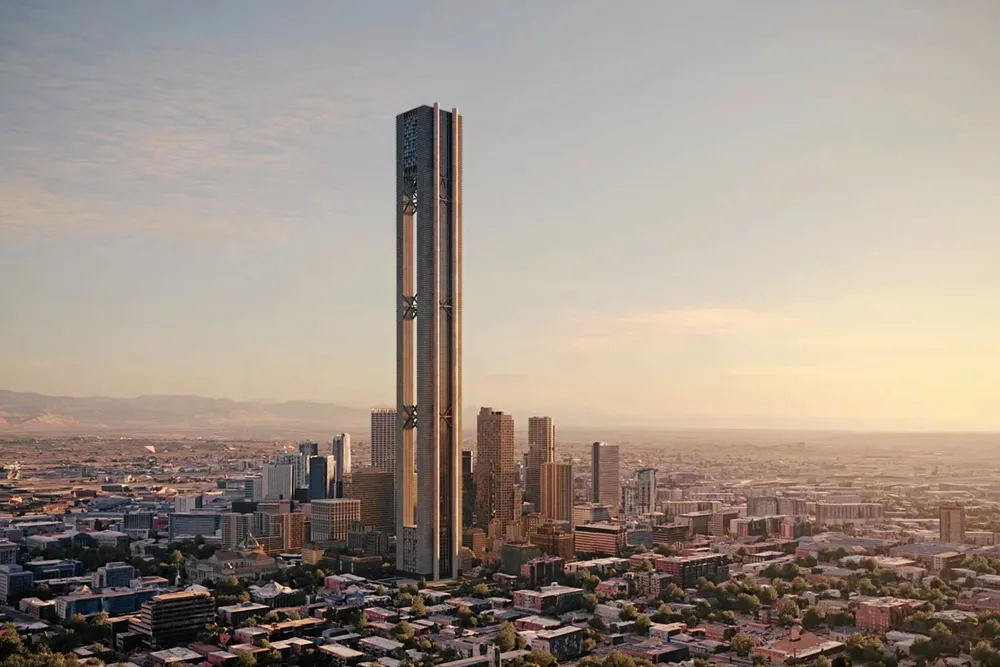Gravity could turn future skyscrapers into towering green energy stores
Concept could help decarbonise buildings, which represent 40% of global energy-related carbon emissions

Skyscrapers of the future could store huge amounts of renewable energy to power themselves using gravity, according to a new plan by the architect behind the world’s tallest building.
Leading architecture firm Skidmore, Owings & Merrill (SOM) has teamed up with Energy Vault, a pioneer in using gravity to store green energy, to realise the futuristic idea.
Swiss-US developer Energy Vault has developed a method of storing excess green power by lifting huge bricks into the air. When power is needed, the bricks are lowered to release energy and generate electricity.
The new partnership sees Energy Vault team up with what its CEO Robert Piconi said is the architect behind “some of the world’s most remarkable structures” – including the world’s tallest building, the 830m Burj Khalifa tower in Dubai, and One World Trade Centre in New York.
“Our strategic partnership with SOM opens a new multi-billion dollar market segment for Energy Vault focused on the future of sustainability in new building design and energy efficiency.”
Buildings are estimated to be responsible for approaching 40% of global energy-related carbon emissions, including from power needed to operate them, make them a pleasant temperature and build them in the first place.
Energy Vault and SOM want to decarbonise some of the world’s tallest buildings – those with heights above 300m, and up to a kilometre tall – by incorporating the gravity storage concept through a hollowed superstructure.
These will be able to store multi-GWh of gravity-based energy storage, which is larger than many dedicated energy storage facilities. The skyscrapers could power not only themselves “but also adjacent buildings,” said Energy Vault.
Another concept will “for the first time” see large-scale pumped hydro energy storage – typically seen in dams in mountainous regions – integrated into tall buildings using a “modular water-based system.”
The market for such storage solutions may be limited. Currently, there are only 173 buildings worldwide over 300m tall, according to the Council on Tall Buildings and Urban Habitat. Many of the new skyscrapers Energy Vault will likely be targeting won’t be ready until the 2030s.
The partners have also unveiled two other energy storage concepts.
One seeks to employ Energy Vault’s gravity concept to pre-existing slopes to store energy with “minimal environmental impact and reduce the need for manmade structures, which can achieve ultra-low cost capital expenditures through eliminating the construction of the fixed frame structure.”
The other seeks to revolutionise pumped hydro storage by using a “unique and low-cost fabric vessel” they call the “Water Tree”.
This “modular pumped hydro” system would see water piped up hills from these water trees through tubes when there is excess green energy. The water would then be stored in other water trees at the top of the hill, ready for release and discharge when power is needed.
Energy Vault has not had a smooth ride with its gravity storage technology, having had to redesign an earlier iteration that saw a central free-hanging crane raising and lowering bricks.
A recent BloombergNEF report found that while new energy storage tech is poised to outcompete market-leading lithium-ion batteries on cost, gravity storage remains one of the more expensive options.
Energy Vault has branched out into being a developer of the classic lithium-ion batteries its gravity storage system sought to compete with to generate extra revenue.
Its share price has also collapsed since it went public in 2022, with the recent announcement not resulting in any major uptick.
(Copyright)